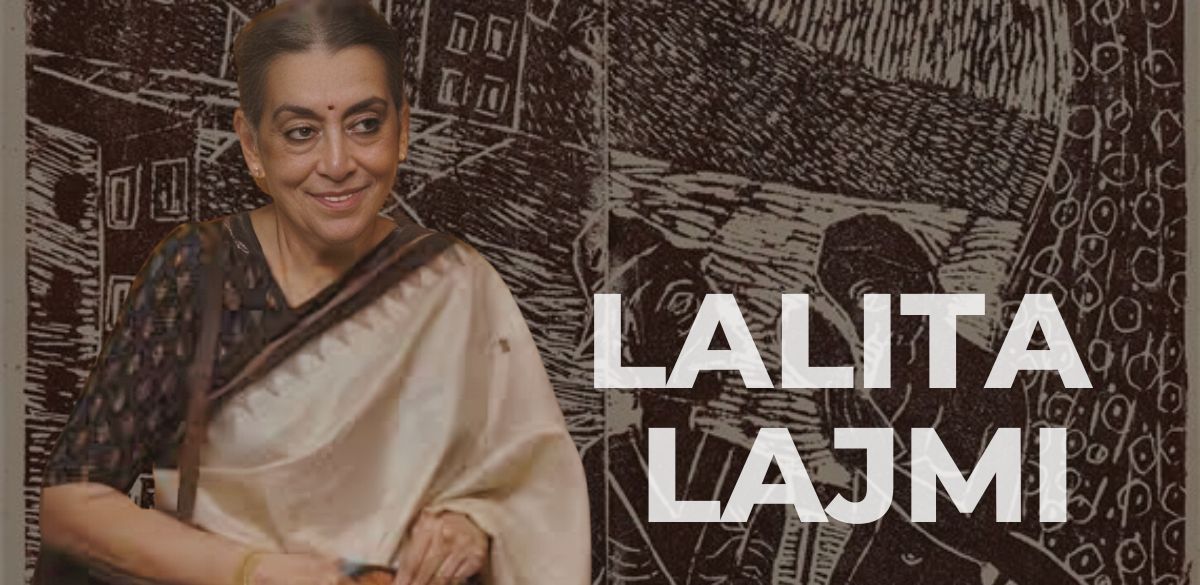Lalita Lajmi (1932–2023) was an Indian painter whose deep introspection and quest to reveal human emotions were expressed in her artwork. Born to a culture of arts—their big brother being the legendary filmmaker Guru Dutt—Lajmi was shaped into the person she was by her fondness for painting and strict observation of life’s lines. She expressed herself as a self-taught painter; all these themes came through not only in Lajmi’s paintings but also in her films, which were testimonies of beautiful yet fragile relationships between men and women. Her art has left a lasting impact on Indian contemporary art, making her a name to remember in the world of figurative painting.
Table of Contents
Early Life and Struggles
Lalita Lajmi was born into a middle-class family in Kolkata. She grew up surrounded by arts, though she was never remotely inclined toward them. It was as if destiny had something special up its sleeve for her. Though she loved classical dance from a very early age, owing to the financial constraints of the time, she eventually directed her creative energy towards painting. An uncle, the commercial artist B.B. Benegal, gave the impetus with his paintings inside a box given to her when she was a child. This would prove to be a life-long pursuit in due course.
She began painting seriously in the early 1960s, but the Indian art market’s impetus was not strong enough to support new artists then. A full-time career as an artist seemed impossible. She taught at leading schools and institutions such as Campion School and Convent of Jesus & Mary in Mumbai. For nearly two decades, she taught alongside painting, always keeping the light of art burning within.
Artistic Development and Themes
Although Lajmi began painting in 1961, she only in the late 1970s that she developed a proper voice for her work. Much like her life, her earlier work was described as melancholy. Her later work brought all latent tensions between genders out into the open. The themes she kept returning to were the relations between men and women and the persona of strong, assertive female figures. She often included pictures of the fierce goddesses Kali and Durga in her paintings, accompanied by male figures in submissive poses.
One of the most striking sets of works by Lajmi is undoubtedly the “Family Series, the intricate strands of which she weaves into an excruciatingly revealing tapestry of family structures. Her women were stark, intense portrayals – not of fragile passive or ethereal subdued feminine qualities but robust, resilient and almost combative where a woman’s soft side would alternately emerge and halt. These women showed expression for that universally aspired piece for autonomy and acknowledgement.
The Cinematic Impact
Cinema- to speak more precisely, Indian cinema- was one profound influence on Lajmi’s work. She was born into a family well entrenched in the film world. She would have been eminently aware of the pioneering work of her brother, Guru Dutt, and other filmmakers as diverse as Satyajit Ray and Raj Kapoor. The theatricality and emotional depth highly visible in her brother’s films found their way into her paintings. She was invited to participate in the Guru Dutt Film Festival, London, in 1994- a fitting event to prove the deep involvement of the lady in cinema.
Lalita Lajmi dabbled a little bit into the films. She acted in Aamir Khan’s film Taare Zameen Par in 2007 and worked as a graphic artist on Aghaat. However, painting was her passion because she could explore the deep complexities of human emotions that were very personal to her.
Legacy and Impact
Lajmi’s works are found in galleries across India, Germany, and the U.S. She has had national and international exposures, and her works are also in collections from institutions such as the National Gallery of Modern Art and the British Museum.
Her legacy, however, reaches beyond merely being an artist because it also encompasses the role of a teacher, where she would search and make tutelary artists. With everything and male chauvinism reigning and circulating in the financially unreliable field. Lajmi never had to apologise for her stand. Her paintings, full of personal narration, speak of emotional depth and the resilience women portray when they take on roles of mothers, daughters, and independent women.
One of the more significant contributions that Lalita Lajmi made to Indian art is the ability to capture the undertones of human relationships. Through paintings, she expressed stories told by many: of strength, the non-strength, and the complexities of life.
The post Lalita Lajmi: The Art of Hidden Narratives appeared first on The Talented Indian.
